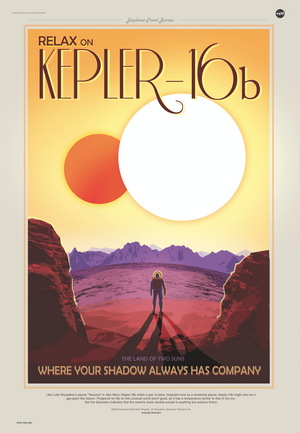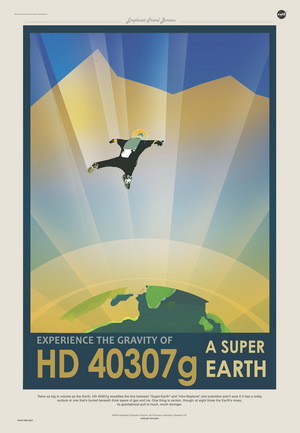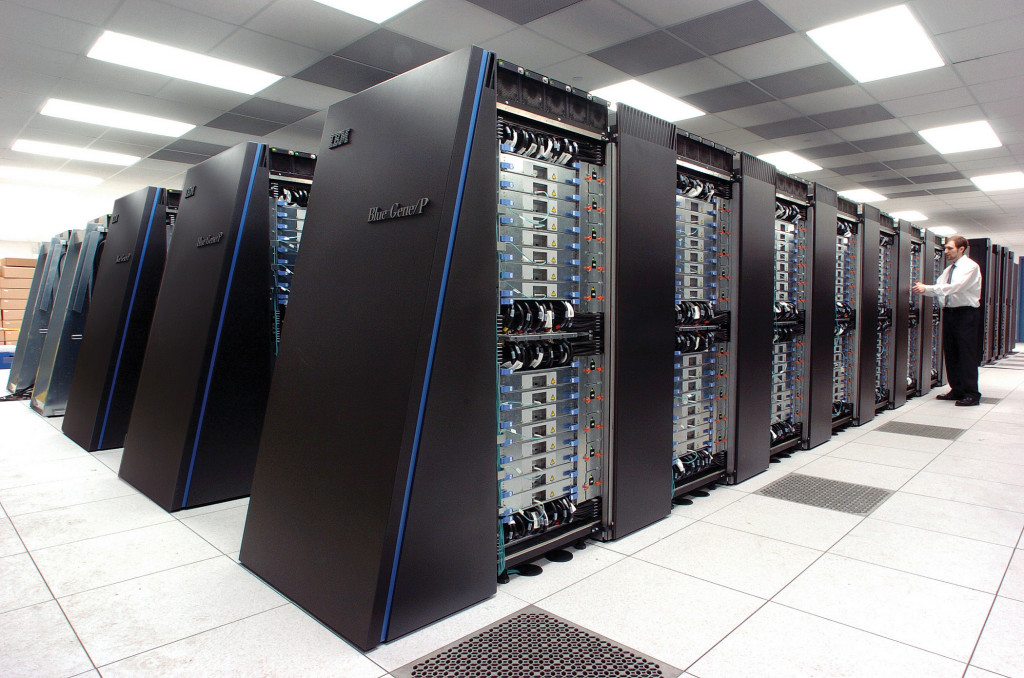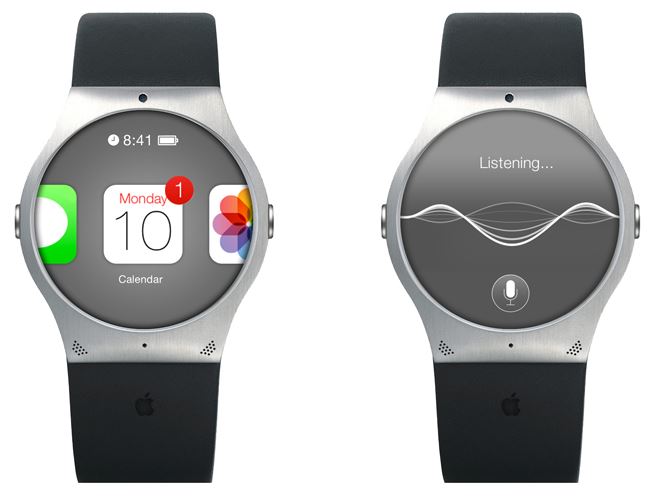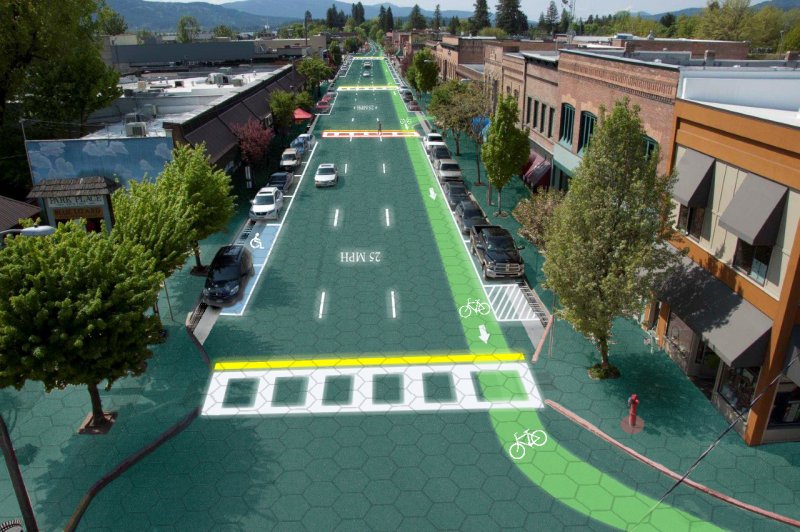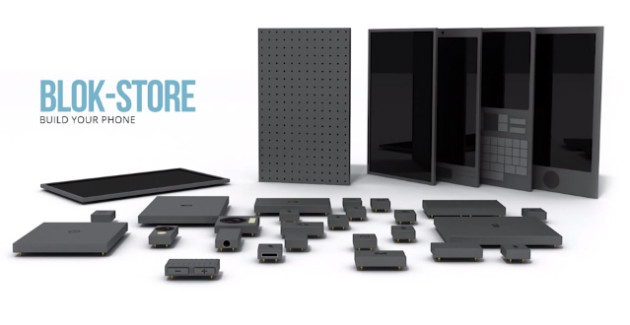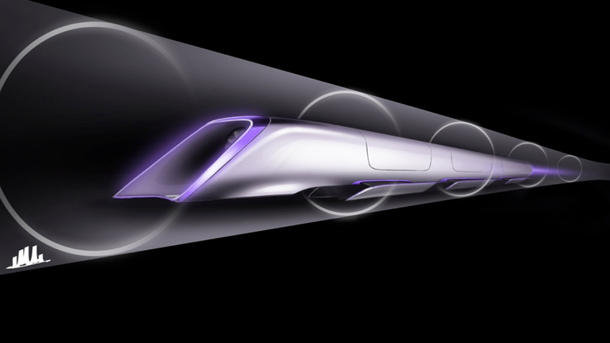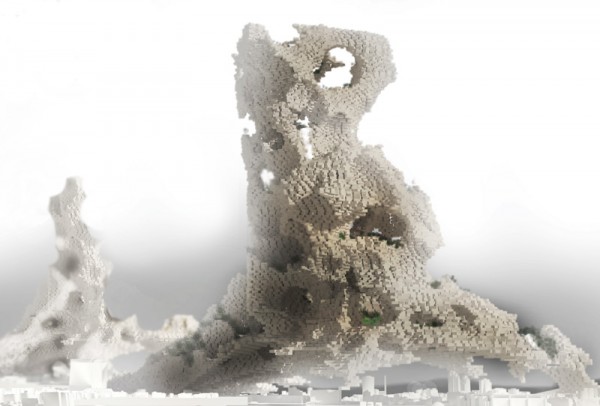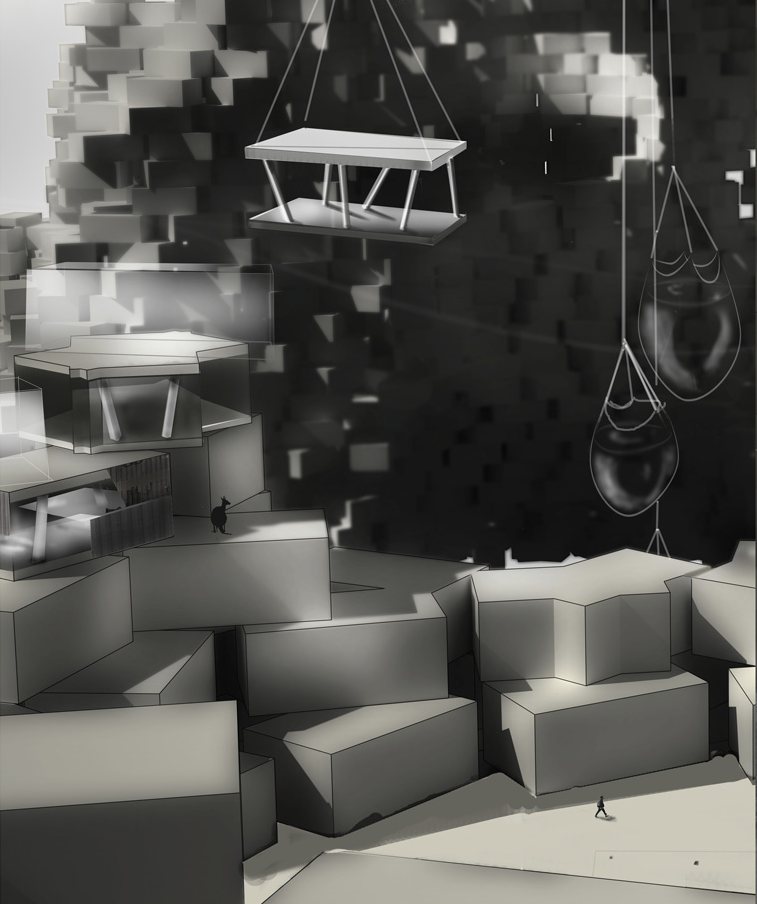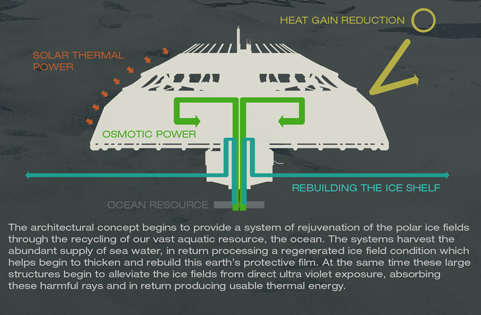-

-

-

-

-

-

-

-

-

-

-
-

-

-

-

-

-

-

-

-

-

-

-

-

-

-

-

-

-

-

-

-

-

-

-

-

-

-

-

-

-

-
-

-

-
 TOTW: Google's Project Ara Modular Phone May Be The Future Of SmartphonesOctober 30, 2014
TOTW: Google's Project Ara Modular Phone May Be The Future Of SmartphonesOctober 30, 2014 -

-

-

-

-

-

-

-

-

-

-

-

-

-

-
-
-

-

-

-

-

-

-

-

-

Posts tagged Concept
The Simulation Argument Part #2 – The Hypothesis Explained
010 years
This is the second article in a two-part FFtech series on The Simulation Argument. If you haven’t already read the first article go HERE before reading the following.
In the previous FFtech article on the Simulation Argument, we established that Bostrom’s statement that the first proposition is false is a reasonable assumption. Just to remind you, these are the propositions, and one has to be true:
#1. Civilizations inevitably go extinct before reaching “technological maturity,” the time at which civilization can create a simulation complex enough to simulate conscious human beings. Meaning: no simulations.
#2. Civilizations can reach technological maturity, but those who do have no interest in creating a simulation that houses a world full of conscious humans. Meaning: no simulations. Not even one.
#3. We are almost certainly living in a simulation.
Now, on to the second postulate. Since that we have decided that there are quite likely alien civilizations in the universe that have developed an ability to create “ancestor simulations”, as Bostrom likes to call them, the second postulate says that the alien civilizations just have to interest in creating a simulation of fully conscious human beings. Most likely, a civilization creating a simulation of how humans lived before they reached “technological maturity” will be future humans, as it is less likely that we will have met an alien civilization before develop the capacity to create an ancestor simulation of our own, as the distance from another habitable stars is simply too far away.
(ABOVE: Some very cool illustrations of hypothetical travel ads for habitable planets found with the Kepler satellite)
However the simulation is created, it seems much more likely that at least one alien starts a simulation. If current trends continue, such as the a definitive interest in our ancestors shown in the multitude of historical studies, there will be plenty of people who would like to simulate how their ancestors lived. I know that I would find a simulation of a Greek town fascinating, for example. The idea that not a single person would want to create a simulation seems unlikely, and so therefore the second postulate is likely false.
So, Bostrom’s first postulate is probably false, and the second postulate is just plain unlikely by human (and, more arguably, alien) nature. Based off of that, do we now live in a simulation? Well, not yet. Just because and ancestor simulation exists doesn’t mean that you’re living in it. First, you have to consider the virtual “birth rate” of these simulations. Bostrom also supposes that it takes a lot more effort and time to create a real human than it would a virtual one once a sufficiently advanced technology is developed. Therefore, the ancestor simulation (or simulations) could have many orders of magnitude more virtual humans living inside it then are actual humans, living outside the computer and controlling the simulation. So, if there are thirty virtual humans for every real human, or even numbers up to 1,000 virtual humans to every human, that means the probability that you are one of the few “real” humans rather than a simulated human is very low.
And that, my friends, is the simulation hypothesis.
Of course, there are many assumptions made here, some clear and others subtle, some of which could be used to attack Bostrom’s argument. For instance, one of the major assumptions that Bostrom makes is what he calls “Substrate Independence”. Substrate Independence is the idea that a working, conscious brain can, as he writes in his original paper,
” …supervene on any of a broad class of physical substrates. Provided a system implements the right sort of computational structures and processes, it can be associated with conscious experiences. It is not an essential property of consciousness that it is implemented on carbon-based biological neural networks inside a cranium: silicon-based processors inside a computer could in principle do the trick as well.
Basically, Substrate Independence is the idea that consciousness can take many forms, only one of which is carbon-based biological neural networks. This form of Substrate Independence is pretty hard grasp, which is why Bostrom argues that the full form of Substrate Independence isn’t actually needed for an ancestor simulation. Really, the only form of Substrate Independence needed to create an ancestor simulation is a computer program running well enough to pass the Turing Test with flying colors.
Besides Substrate Independence, most of the rest of the Simulation Argument is fairly simple. Since we have already deduced that there is likely to be at least one ancestor simulation in existence, the likelihood that we are living in that simulation is pretty high. The logic behind this is that the ancestor simulation doesn’t have a set birth rate that can’t be manipulated. The simulation could have as many simulated people in it as they want – though this is stated as obvious, when it is also debatable — and there would be many orders of magnitude more simulated people than actual human people not in a simulation, and even more if there are multiple simulations running at the same time. The present-day parallel is to online video games MMORPGs, which are constantly getting bigger and bigger, with many more characters made in those games than real humans born every second.
Obviously, this argument is very speculative. Substrate Independence, ancestor simulations, the whole thing; it just all seems too far-fetched to be true. And, after all, Bostrom isn’t a computer scientist, he’s works at the Faculty of Philosophy in Oxford. But, that doesn’t mean his argument is false by nature, as in his original paper he goes into incredible detail about computing power, Substrate Independence, and even creates a mathematical formula for calculating the probability we live in a simulation. In fact, if we want to get technical, Bostrom categorizes what I have told you so far as the Simulation Hypothesis, and the full Simulation Argument being the probability equation Bostrom created, some “empirical” facts, and relation to unrefutable philosophical principles. If you want to read Bostrom brilliant albeit a little wordy paper, click HERE.
To sum it up: a man named Nick Bostrom created a series of logical “propositions” that, when examined closely, seem to suggest that there is a very high probability that we are living in a simulation. In fact, the probability is so high that to close his paper, Bostrom writes:
“Unless we are now living in a simulation, our descendants will almost certainly never run an ancestor simulation.”
You may take knowing this however you want. Personally, I think the simulation argument is one of the coolest things to ever come out of philosophy. And if it’s true, that we live in a simulation, that only makes it cooler. After all, we will never know for sure whether we live in a simulation or not, and either way, it doesn’t affect your life the slightest. You have no choice but to continue living your life as you did, maybe in a simulation, maybe not. All this shows is that as technology continues to develop at a rapid pace, we are getting closer and closer to even the wildest of science fiction technologies to become a reality.
Sources: https://www.youtube.com/watch?v=nnl6nY8YKHs http://www.simulation-argument.com/simulation.htmlBitcoin – What It Is And Why It Isn’t Ready
010 years
Personally, I see Bitcoin as a interesting concept, but isn’t near close to a time where it can be used in everyday life. In case you don’t know, Bitcoin is a cryptocurrency, and the first of it’s kind. It’s a currency that is completely web based, and has absolutely no intrinsic value. If the value of bitcoin falls, you lose your money. The good side of Bitcoin is that, as I said, it is completely web based, and there is no way for when transferring Bitcoins for for any bank or system to play with it. It goes straight into the other person’s account, excluding taxes. Also, although this can be interpreted any way, but the way Bitcoin is created will gradually fall, making the amount of Bitcoins available for use the same from 2025 onward. When 2025 hits, no more Bitcoins will be produced, meaning no matter how many people are using Bitcoin the number of Bitcoins will always be the same after that.
So that sounds great, but the cons on Bitcoin are substantial. To recap, the main goal that fueled the creation of Bitcoin was to make a currency that can be regularly used. Unfortunately, the problem with that is that 3 years ago, Bitcoin was worth 5 US dollars. Now it’s worth 445 US dollars. At least, that’s how much the select Bitcoin traders will give you. At one point, it was worth 1,200 dollars. With all the fluctuations in the price, with a uphill trend, who knows what the price will be. But if I had bought 3 Bitcoins back in 2011 for $15 and now they’re worth $1,500, I wouldn’t sell them. Or maybe I would. That’s the problem, they’re turning into a long term investment instead of a currency.
As the video above says, some people believe that the uses of Bitcoin isn’t apparent to us now, just as people in the 80s didn’t think that anyone needed computers to live a normal life. That is certainly possible, but it’s my opinion that in the current state of the system, it isn’t good enough to benefit society in a big way.
Also, there are some other problems, such as the theoretical ability to hack into your online wallet, or even the Bitcoin server, and steal the Bitcoins of many people. Sure, maybe the Bitcoin encryptions are good, but it’s hard to trust a online currency with all the hacking going on around us all the time. Sure, maybe the Bitcoin encryptors are a step ahead of the hackers, but I wouldn’t bank my life’s savings on it.Along with that, a secret key, or passcode, is used to verify access to all of your Bitcoins. If someone finds out your password, they can spent, transferred, or anything.
Yet another design flaw is that Bitcoin isn’t really designed to be a currency, even though the creators want it to be. The reason for this is that the people who benefit the most from using Bitcoin isn’t small selection of people who actively use Bitcoin at the small selection of online and concrete stores, but the people who hold their Bitcoin, and who use it as a long-term investment. Again, this is a concept. If Bitcoin, or another virtual currency like it has a chance of becoming popular it has to find a way to reward the regular user, which will certainly take a lot of innovating and reiteration of the basic coding and structure of Bitcoin itself.
I’m still skeptical, as I expect everyone will be when adopting this type of money. But, there may be a time when Bitcoin is ready to be used. Maybe, the amount of Bitcoins released will work out, the kinks in the system will run smoothly, the encryption is unhackable (something that will certainly take many years and be a big step forward for cryptography), the cons of the system replaced with more pros, and everyone will accept it. Just maybe. (see optimistic video above)
Apple’s WWDC 2014 – What To Expect
010 years
Every year, the tech world explodes with a gigantic amount of rumors and speculations and concepts of what might come out of this years WWDC. Apple’s big developer conference always brings something surprising and amazing to the table, despite all the attention it’s getting. Last year, iOS 7 was announced, the biggest change to iOS ever. That one change boosted along the flat design movement, and the expectations are high for what will happen this year. Of course, another complete redesign probably won’t happen, as it’s to soon to throw another curveball that the industry, so what changes they actually did do to warrant the title of iOS 8 is still a mystery.
Now, before I start, I want to warn you of something. Don’t kill the messenger, but there is a tiny, tiny amount of information about any of Apple’s software updates, which will reportedly feature in this year’s WWDC. Apple is known for their incredibly strict ruling about these kinds of things, so correct leaks are very rare. But, there is a general idea of what will come out, so I make what I can with what’s out there.
iOS 8
For instance, something that we are sure that will come out is iOS 8. Pictures of a big “8” banner, with a watery background, were taken at the site of the conference in the Moscone Center in San Francisco, California. As I said earlier, it’s way to early to redesign the system again, so the changes made will most likely by new features and improved specs.
Speaking of new features, a pretty solid rumor has been going around about Apple’s delve into the health and fitness market, Healthbook. In a article by 9to5Mac, Healthbook was reported to have many functional abilities, such as heart rate, nutrition, blood sugar level and steps taken monitors. Because the iPhone M7 chip isn’t really capable of collecting all that information, (though a new chip they introduce theoretically could) it is assumed that Healthbook will be a hub for many other third-party applications and products.
Besides that, there are some other smaller rumored features, such as iTunes Radio getting it’s own app, a Siri upgrade, a music recognition app in partnership with Shazam and a hinted at new mobile payment system. Other than the rumors that I’ve mentioned so far, Apple has kept it’s release pretty watertight. There are so many possibilities in this release, new features that could be added, it’s just the way Apple wanted it. A surprise to blow your brains out.
OS X 10.10
Along with iOS 8, we know that OS X 10.10 will also be released, in the same way we know iOS 8: a big “X” banner. Though unlike iOS 8, where the water backround doesn’t matter, OS X banners tend to relate to the name of the system. This year, the backround was of El Capitan, a gigantic rock formation in Yosemite, indicating OS X Yosemite or OS X El Cap.
Because of the last WWDC’s iOS overhaul, it’s expected that this year the OS X UI and design will get the attention. Most likely, the still slightly textured and skeumorphic OS X will look more like the flat iOS 7. Also, some of Apple’s own music and photo apps might get a redesign to match the overall flat design, but there is incredibly little known about OS X 10.10.
iWatch
I’m sorry to burst your bubble, Apple fans, but it’s looking like the hotly anticipated iWatch will not be released this WWDC. First of all, the WWDC is historically used for software, not hardware updates. Also, sources familiar with Apple’s general plans were reported to say that they will most likely not release the iWatch, just adding on to the already pessimistic attitude surrounding the release of the iWatch.
Even though the whole media industry is probably overdoing this whole thing, nobody can doubt the importance and excitement surrounding this release. After the software is sent out to the millions of developers out there, eager to get their hands on the new features and capabilities. The whole next year in tech may change drastically depending on what comes out of tomorrow’s keynote speech. On a completely separate note, make sure to check back here for the official Fast Forward WWDC 2014 keynote speech live blog at 10:00 to 12:00 AM PT!
TOTW: Solar Roadways Raise 1.6 Million On Indiegogo
010 years
In the last few weeks, one couple, Scott and Julie Brusaw, from Sage, Idaho were getting a lot of press for their ingenious idea and video. Their idea and company, Solar Roadways, is basically their own way to help the world in our increasingly difficult struggle against Global Warming. The basic idea is that Solar Roadways wants to replace every paved road, parking lot, playground, school, highway and sidewalks on the planet with their own special solar roadways. These roadways aren’t poured like cements, it’s just a bunch of thick, expensive hexagonal solar panels built to withstand the weight of cars and people that you have to lay down one by one. A long, arduous process. Still, these panels pay for themselves, since after all, they are solar panels.
Along with the awesome solar part, there are other perks of switching to solar roadways. For instance, a set of multicolored LEDs are embedded into the panels, allowing for street lines, parking lot lines, obstacle warnings and even the pressure of the steps of wild animals in the road will be brightly displayed at night, which will definitely stop some accidents and keep the world more organized. But, wait, you have to pay for the batteries or electricity to charge those LEDs, right? Nope! Solar panels!
And that’s not all, folks! For any of you who live in cold, snowy places such as Russia, Michigan and Antarctica, this will be good news for you. Using the solar energy it harvests, the panels and heat up and completely melt the snow right off the road, leaving it safe for cars and bikes. No more days snowed in.
Now, this sounds hunky-dory and all, but these things are not cheap. So, just to get started, Solar Roadways put out an Indiegogo campaign with a hopeful goal of 1 million. Luckily, the internet is full of forward thinking, generous people, and Solar Roadways has raised 1,646,456 dollars, already breaking the record for the highest amount raised and most people backed, previously set by the Nikola Tesla Museum at 1.3 million. This alone is astounding news for the Brusaws, but the money will only keep rolling in, as they still have 22 days left in their funding period.
Not only is solar roadways a more safe alternative than average concrete, but having microchips and LEDs in the roads will open up a infinity amount of possibilities. Who knows? Using the pressure sensors, the chips could talk to automotos cars, adding another layer of protection for any of you doubters. If the energy from the roads will be public, everybody could potentially have an electric car. The company even says that it can cut the greenhouse gas levels by %75. Were all talking about how big of a deal Global Warming is, with report after report saying how well all be flooded in 100 years, but nobody is really doing something about it. Solar Roadways amazing project and idea, and hopefully they will get enough funding to produce it all over the world.
TOTW: What To Come In 2014 For Technology
11 years
2013 was a great year for technological breakthroughs. New iPhones, new iPads, curved screens and more are just some of the things that were developed in 2013. But there is one question that is still being asked: what does the new year hold for us? There have been many promises, leaks and hints throughout the end of last year, and we can only wait and see if they become true. But we can predict.
There are many things that are very likely to happen in 2014. One of which is the highly awaited public release of Google Glass. When Project Glass was released as a concept to developers back in Google I/O, the frenzy of publicity began. Everyone was completely memorized by the possibility of a computer on your glasses, and apps soon began popping up everywhere for every usage. These glasses and almost certainly being released on the early 2014 Google I/O. Of course, millions and billions of people will learn about these glasses and become intrigued enough to buy one, and Google Glasses will soon be seen everywhere. This will certainly cause some controversy, but will probably blow over soon enough.
We can’t forget Apple, though. At the 2014 WWDC, we can reasonably expect a new iPhone 6, which will probably be 50% percent lighter and 30% thinner. The retina will be better, and all the other stats will be much improved. The new Macbooks and iPads will most likely come at the later Apple conference, since at the last conference they were updated. After the release of the iPhone 5C, there is a chance that Apple will go down the color path with their other devices, especially the iPad Minis, which would definitely be a big surprise and a hit with the younger generation.
There has been one Apple product that I have been skirting around, but will now address. The iWatch. Samsung have already released their smartwatch, the Galaxy Gear, but the early version was slightly disappointing. First of all, it is not a stand-alone product, but only works if paired to a Galaxy smartphone. The functions of the watch itself is limited to answering call, which you then have to get you phone out to answer, checking social and SMS notifications, and using Samsungs 70 third-party app like Path, Evernote, Runkeeper and more. The design is not fantastic and somewhat slow if you are used to Apple products, so we can hope that Apple improves on that. What Apple would do to make the iWatch significantly better is (1) make it faster and more reactive and (2) make it stand-alone from Apple’s other devices. If they do that, then it might justify Samsungs price of $300.
Smartglass will certainly take a leap in the new year. Transparent phones are already being prototyped without any software (so it’s useless for now), but it still has a few noticeable spots of chips, cameras and such visible. Since, as in Corning’s brilliant video, A Day Made Of Glass 1 and 2, smartglass will be everywhere in every shape and size in the future, we cannot hope too much for this coming trip around the sun. Although, significant progress will be made, and curved or curving glass will definitely be upgraded, almost to the point of public release.
A Day Made Of Glass 2, paused and explained by Corning
All in all 2014 is certainly going to be an interesting year. Breakthroughs will be made in not only technology, but science, physics, and almost any other field you can think of. The big events to look out for this year is the Google I/O, the Apple WWDC, the 2014 CES, Macworld/iWorld Expo, and more. Just as in 2013, at just these events thousands of products and concepts will be released and showcased, its amazing that all this could be accomplished in one year. But for now, all we have to do is wait and let the scientists and engineers work their magic.
TechSpot: Phonebloks, A Could-Be Everlasting Smartphone
0When you get a phone, you know it may not last very long. You can easily drop it or leave it somewhere. Many companies offer cases to protect it, but most just don’t look good, and the look is half a phone’s worth. Plus, even if you do make it for a year or two, a new model will come out and you’ll throw yours away. That creates a lot of “electronic waste” that crowds landfills. This is the problem that Phonebloks is supposed to help fix.
Phonebloks is a interesting concept for a phone that can last a very long time, because it has easily replaceable parts. But before I go into the actual design, remember that it only at concept stage, and is not yet designed to look as slick and as thin as possible. Anyway, the main design for Phonebloks consists of three layers. Of course, the first is the screen. In the middle, there is the motherboard, base, or whatever you prefer to call it. Third is the layer that sets Phonebloks apart from other devices.
On the back of the middle layer, there are holes, similar to breadboards for you engineers out there. For the device to work, you have to snap in little blocks that make up the whole of the phone. Each block represents a different part of a smartphone, and when you snap them in, the smartphone works. So whenever your phone slows up, or the screen shatters, you can just replace the block. Also, different companies make their own blocks, so you could (conceivably) get a Apple camera, a Samsung battery, and Nokia form factor.
Another great capability of Phonebloks is that you can customize your phone. If you love to take pictures, upgrade your camera block while keeping your processor and storage the same, if you just upload your photos, anyway. Or, if you like to surf the internet or Instagram constantly, improve your antenna and Wifi blocks. You decide for yourself. Overall, it is an interesting concept/prototype, with good intentions, despite a potentially high cost and questionable implementation. We can just hope it actually comes to this crazy phone market and sells.
TOTW: Elon Musk’s Super-Train Hyperloop
0Last year, the state of California gave 7.7 billion dollars to a project trying to build a high speed rail-train, California High Speed Rail (quite self-explanatory). But, this money was just enough to build a small section of the train, and in general, wasn’t that promising to the tech tycoons living, working and scheming in Silicon Valley. Elon Musk, the living comparison to Iron Man (though not as super-hero like), had an idea based off of the old 80s concept, the Hyperloop supertrain. The CHSR was just too expensive and slow, estimated to be around 220 mph. The Hyperloop will probably (hopefully) be 750 mph. Beat that, Californian government.
While being able to go from San Francisco to LA in half an hour, we can’t help wondering, “How?” Well, as I said before, Musk took his idea off of the old vac-train concept. The train itself is in a tube, and because of California’s earthquake tendency, on pillars. On top of the tube are solar panels to help fuel the train. If it’s that fast, it might as well be green, to.
The train, while in action, will ride on top of a floor of pressurized air, letting it, and helping it, gain and gain speed to 800 mph without those pesky sonic booms. To passengers, it will feel like a plane ride. But, after a recent announcement from Musk, we know that it just might be better. First of all, it will be cheaper for passengers. Musk said that the tickets will be cheaper and, not counting the machinery, the pods and tubes will be 6$ billion to build.
Secondly, Musk says that there will be a car option in some of the bigger tubes. You just drive into the train, take off, and be there in 30 min with your car, which can be very useful in cities like LA. Also, you save money, and hassle, from taxis. Overall, the Hyperloop train is so high-tech, cheap, green and revolutionary that I hope it carries through. It has the potential to take over from regular train everywhere. Then again, as Elon said, “Over 1,000 miles, the tube cost starts to become prohibitive, and you don’t want tubes every which way. You don’t want to live in Tube Land.”
TechSpot: SkyTran Hovering Public Transportation
0Public transit is always an issue when discussing a highly populated city. Whether it is buses or taxis, trains or subways, they all pollute a fair amount. Some cities have started to change, such as the popular bicycle system in Paris and other European capitals, but many other cities haven’t bothered. SkyTran, a NASA funded project, is a public transportation system trying to help the pollution, not only in China, but all over the world. Not only could it help the environment, but it is also very fast, lightweight, efficient, cheap and cool-looking.

The pollution is so bad in Beijing, many put their hands out in front of them because they’re worried they’ll hit something… or they’re doing Tai-Chi.
SkyTran uses magnets to hover in the air, reducing friction, making the pod go really fast. The aerodynamic shape and size help it fly through the air. It might be a little fast for some people (almost as fast as a roller coaster), but the passengers can adjust the speed. Still, speed is important, because if you have been on a bus or train, all those stops really slow you down. On a SkyTran, since you and two other people are the only ones in the pod, you can choose the stops. That makes for a fast, energy efficient commute.
If SkyTran does become a reality, the plan is that the pods will all come out from stations, much like chairlifts at amusement parks. The pods would be magnetically floating near a metal rod, supported by relatively thin metal poles. That way, cars can still drive under it, unlike trains. More space, more convenient. Sounds good, right?
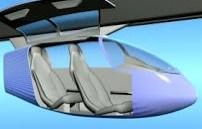
Designed by NASA Ames laboratory in Silicon Valley, California, with the help some start-ups, the SkyTran is a great help to everyone. Whether you are always late, or are worried about the environment, SkyTran is a fascinating transportation idea. Using its solar power, it barely uses any real fuel. Plus, because it is so lightweight, it is really cheap, even cheaper than a bus system. Just imagine, zooming across the city at up to 100mph, going just to where you want to go, no stops. You’ll never have to worry about being late again!
TechThought: eVolo Skyscraper Design Contest
012 years
by FFtech
in Uncategorized
Every year, eVolo has a competition for the most creative and ingenious designs for future skyscrapers. It’s basically where you get to go all out on the design. You can make it as futuristic as you want. They get tons of submissions every year, and this year they received an astonishing 5,000 designs. This year’s competition winners were announced yesterday (March 13), and all of them are absolutely amazing. I will review the top 3.
3rd Place: Light Park

Designed by Ting Xuand and Yiming Chen, Light Park (as pictured above), takes on the problem of overpopulation and pollution in Beijing. It would hover above Beijing using giant Helium filled air sacks at the top of the structure. The structure also has solar powered propellers at the bottom to make sure it doesn’t fall. This design could free up green space on the ground by elevating residences and offices.
You may be wondering, “What are those plates sticking out of the side of it?” Well, they don’t show it in the pictures above, but they are parks, fields and other green space. They provide space to relax in the crowded city of Beijing, while also making it child-friendly. The pillar where the plates meet has shops, restaurants, and living space.
One problem with Light Park, despite its creativity and benefits, it obviously its vulnerabilities — for example, what about tornados and hurricanes? Yes, they rarely have tornadoes and hurricanes in Beijing, but if they do, it would get hurled. Even strong winds would seem to be a concern.
Even thought Light Park has some safety concerns to work out, it is a fantastic design. Since it runs solely on eco-friendly power, it could help Beijing’s terrible problem of air pollution. The plates also were a great idea, making it enjoyable to live in. I’m not even sure I’d ever get off it besides for vacations. It must have taken Ting Xuand and Yiming Chen at least a year to design, because they made sure every little thing was taken care of. They even designed a terrific water system that filters rain water. Ting Xuand and Yiming Chen defiantly deserved 3rd place, and if they don’t try to build at least a mini Light Park in 20 years or so, I’d be disappointed.
2nd Place: Phobia Skyscraper
Phobia Skyscraper is a design bent on helping the urban life in Paris. If you have ever been to Paris, you know that is is one of the busiest cities in the world. Designed by Darius Maïkoff and Elodie Godo, Phobia Skyscaper is made out of mini (compared to the whole structure) blocks. Each block can be a store, house, workshop, or nearly whatever you want. Phobia Skyscraper is more of a mystery, not really making it clear how you would get around.
What Phobia Skyscraper does make clear is that it will make much more space for paris, and shops will have lots of costumers. Also, it has something called Nuclei Centers, which are basically holes in the structure that make a sort of community center. It won’t be as “green” as Light Park, but it will be a place people would meet up. Big events like weddings, boxing matches, small fairs, exhibitions, and lots of other events would be held in the Nuclei Center, and it would become a fairly crowded place overtime. In the Nuclei Center, there are big screens that show messages, news, and other information like that. The Nuclei Center would most certainly be the most populous place, so stores will likely be place near there, making it a lot like a shopping mall.
Phobia Skyscraper would definitely change Paris, adding shops, living space and much more. It could also help Paris ecologically. It has a rain water filter system that would not waste energy on filtering and shipping water from unnecessary places. One problem is that some people may think it is ugly, and not want it in the amazing city of Paris, but if it does get into the city, there could definitely be some benefits.
1st Place: The Polar Umbrella
Like Light Park, the Polar Umbrella takes on a environmental issue: global warming. Placed on the top of the North Pole, the Polar Umbrella would help cool the icecaps down and rebuild the layers of ice. It takes in the salt water, cools it down using a high-tech system, and spreads it out over the water. This design could help preserve the icecaps, which is greatly needed.
The Polar Umbrella isn’t just a ice producer, it also serves as a research lab and tourist spot. It isn’t primarily meant for a tourist destination, so there aren’t many rooms. The rooms they do have are small, but the fact that you are on the North Pole will make up for it! Researchers and conservationists would also find the Polar Umbrella very helpful, because it also has a viewing deck and helicopter pad.
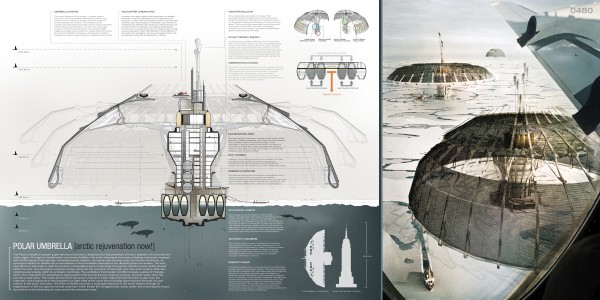
The architectural design of the Polar Umbrella is amazing. It integrates scientific equipment along with a great design for research. When you look at it from far away, it looks very small. But when you put it vertically, it actually matches the height of the Empire State Building. Thats a lot of ice being made. Designed by Derek Pirozzi, the Polar Umbrella is a environmental masterpiece. It completely deserves its 1st place medal. As I said before, it would very greatly help the North Pole, and absolutely should be explored as a concept.
eVolo’s(which incase you didn’t know, is a architecture magazine) annual contest bring up lots of designs that spearhead different problems. Hunger, global warming, pollution, and lots of other problems could partially be solved if at least a couple of these designes are built. Plus, who wouldn’t want a brand-spankin new high-tech futuristic looking skyscraper in their city?
(If you found this interesting, I recommend getting the $150 book eVolo Skyscrapers, a commemorative book with 300 designes submitted over the years.)



